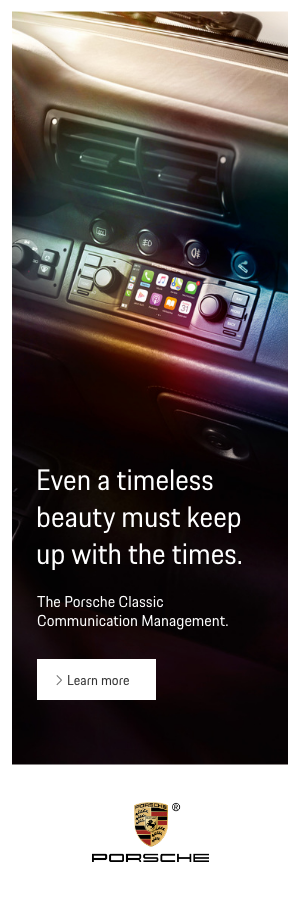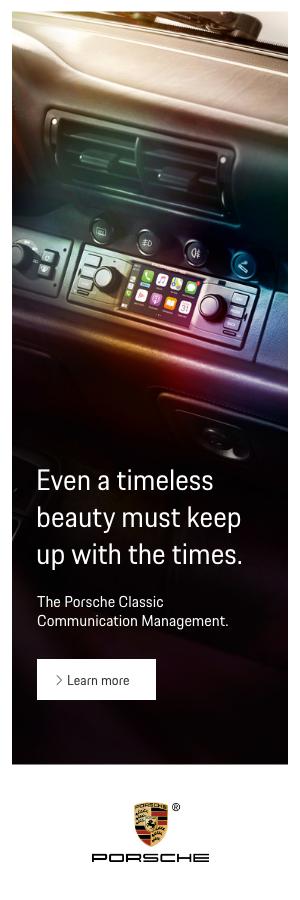I’VE NEVER DECIDED which I like more – driving my Porsche, or tinkering with it. I’m drawn to the older cars, as they are from a simpler era, and I can do much of the work myself.
In 2009, looking for another project, I found a 1967 912. Back in the 1970s, a 2.0 litre H6 from a ‘69 911T had been transplanted into it. It needed some TLC, but the price was right. I drove it on a regular basis, worked to take care of the most needy areas, and thoroughly enjoyed it. I never minded a few paint chips and rust spots, but I did want a reliable and driveable car that could be trusted to get me somewhere and back.
One of the frustrations with the car was the Weber carburetors. I don’t know if it is modern gas, or something wearing out, but after the first five years, the car began to exhibit fueling issues. Spitting and popping, rough transitions, and misfiring at high revs. I disassembled and cleaned the carbs, installed all new fuel lines, installed two fuel filters, used non-ethanol gas. It helped, but the symptoms always came back after a few weeks. I had the Webers serviced and inspected by a professional – they were pronounced sound, with no wear and no blocked jets or passages. My ignition system was good, and compression was good across all cylinders. No abnormal oil usage to speak of.
In 2017, I was browsing Bring-A-Trailer (don’t we all?) and came across a 911SC that had Webers, but had more recently been converted to a modern electronic fuel injection system. It was based on the Megasquirt ECU and open-source software. It looked really interesting, so I contacted the seller (who was local to me in Toronto) and asked about the experience. He highly recommended the conversion, which he had sourced mostly from X-Faktory (WA, USA) I contacted Al Kosmal at X-Faktory, who worked up a bespoke system that contained all the important bits.
The shipment arrived, and it took over the dining room table – a pair of PMO throttle bodies (looking just like the Webers), intake manifolds, the Megasquirt ECU, a colour-coded wiring harness, wideband oxygen sensor and air-fuel ratio gauge, high pressure fuel lines, pressure regulator, fuel injectors, throttle position sensor, throttle linkages, air cleaners and hoods, and most importantly of all, some instructions! I had to source a high pressure fuel pump (bought a new one for a 911SC), some manifold pressure tubing (the ones in the kit were too large in diameter – I felt I would be dealing with air leaks) and miscellaneous electrical connectors.
This was my winter project, so once there was salt on the roads, I started. The ECU was mounted under the passenger seat, the wiring harness and manifold pressure sensor line were routed back to the engine compartment. Off came the old Webers and manifolds. In went the new fuel pump, pressure regulator and some of the high-pressure fuel lines, as well as some additional 12 volt wiring. I added a new fuse block into the left-rear of the engine bay, with fuses to protect the fuel pump, ECU, fuel injectors and O2 sensor. In went the new intake manifold and throttle bodies (now assembled with the fuel rails, injectors, injector wiring, and throttle position sensor.)
With the throttle bodies installed, the manifold pressure lines were run and the throttle linkages connected. I measured, cut and installed the high-pressure fuel lines with the supplied fittings. This was one area I diverted from the instructions. My car had carburetors its whole life, so only had low-pressure (3-5 psi) line running from the gas tank to the old fuel pump to the Webers. It was a one-way path. But generally, fuel injection systems (40 psi or more) run continuously and have a return line feeding back to the gas tank. This is a big advantage, as with a continuous stream of fresh fuel, you won’t get vapour lock when hot. But I had no return line, and I was very (very!) nervous about cutting a hole in the gas tank. Luckily, on the Summit Racing website, I found a sleeve that fits into the gas filler line with a return line connection. Then it was just a matter of running a hard line for the fuel return from the engine bay to the front.
Last part was the wiring. Al had supplied a good wiring diagram. I did have a few questions, but Al quickly sorted me out. I located the temperature thermistor on the oil thermostat and wired that in, and finished off the installation by drilling a hole in my SSI headers (yikes!) to install the O2 sensor, using a clamp (also found on the Summit website) rather than welding the bung on.
The “hardware” installation was finished. Now for the “software”. Al had supplied a base “tune” for the Megasquirt ECU. To load the configuration, I needed to plug a laptop into the ECU. An open-source program called TunerStudio was the recommended option, which works best on a Windows computer. I ended up buying a $299 laptop that uses a USB port to plug into the ECU.
TunerStudio makes it easy – Al’s base tune had a very conservative set up (i.e. too rich, rather than too lean.) I confirmed all the initial settings (e.g. six cylinders, running gasoline, no turbo, injector size, etc, etc) and calibrated the O2 sensor and throttle position sensor, then flashed the tune to the ECU.
I went to Canadian Tire and bought the biggest fire extinguisher they had (as a supplement to my smaller one.) My son and I rolled the car out of the garage to the end of the driveway, and he stood by with the extinguisher. I had no idea what to expect.
I went to Canadian Tire and bought the biggest fire extinguisher they had (as a supplement to my smaller one.) My son and I rolled the car out of the garage to the end of the driveway, and he stood by with the extinguisher. I had no idea what to expect. I turned the ignition on, let the fuel pressure build for a couple of seconds, then engaged the starter – three seconds of cranking and it ran, and responded nicely to throttle input! “Well, that was no fun…” said James (but impressed with his old man’s automotive prowess.)
From there, it has been a matter of using the laptop to review and update the various tables (e.g. manifold pressure versus RPM is a 16 by 16 matrix, 256 cells, each one controlling the amount of fuel at that combination) and the resulting air-fuel ratio reading on the wideband O2 sensor. At first I was making large changes, leaning the fuel out across the board. Over time the changes became smaller and smaller as I tweaked each cell closer to the ideal result. There are additional features to control more fuel for start-up, and the tapering off as the engine warms up. The ECU can squirt more fuel when you nail the throttle, just like the Weber’s accelerator pump.
The result is a car that starts easily, drives really well, and has been trouble free. I continue to tweak the tuning, and learn more about how various elements interact with each other. The ECU can control ignition timing, which I did not do as part of the initial installation, as I wanted to focus on the fuel aspect and not add a complicating factor at the same time. But now that the injection is good, converting the ignition is the next job.
I spent perhaps 25 hours on the hardware aspect of the install, and maybe another 25 hours of driving around and tuning to get it where it was better than the carbs. Some people put their cars on a dyno to have it tuned, which is much quicker, but I wanted to do it myself.
It has been a great project, and for anyone struggling with carburetors, I would recommend doing the conversion. Feel free to contact me at fisher@mobilbid.ca for more information. </>
Article & photos by Derek Fisher, PCA-UCR Member


















